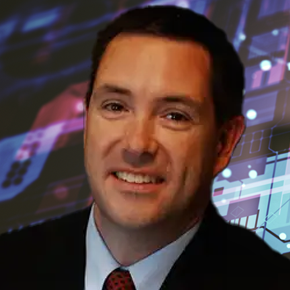October 19, 2022
Sustainable Plastic Manufacturing

Transcript
The push towards sustainability is forcing manufacturers to take a circular approach to their product life cycle. Nowhere is this more important that in the realm of sustainable plastic manufacturing. Even though plastic has long been a focus of recycling, there were still 40 million tons of plastic wasted in the US alone in just the last year. So how can companies begin to track and reduce their plastic waste?
My guest Bahruz Mammadov is an expert on the life and afterlife of plastic. After many years as a chemist and material scientist, Bahruz Mammadov founded the material sciences company BERKM, where he is currently CEO. BERKM aims at improving recyclability, starting with innovations in plastic. Bahruz Mammadov, welcome to the podcast.
Bahruz Mammadov: Thank you, Leah. Thank you for having me.
What is Sustainable Plastic Manufacturing?
Leah Archibald: We know that many manufacturers have sustainability on the brain right now. Where does plastic fit into the overall picture of sustainability?
Bahruz Mammadov: If we speak about sustainability, we want to use resources which are renewable. Now most of plastic comes from fossil fuels. Basically, they dig the oil from the ground and they refine it and you get raw materials for plastic.
Unfortunately, plastic is not going anywhere because it is in our daily life. Because it is cheap, it is widely used. It is a good material for many purposes.
Leah Archibald: It’s very light. It’s very versatile. The questions is how to get to more sustainable plastic manufacturing.
Bahruz Mammadov: Yeah. So the question is not how we get rid of plastic, but how we use less of it and how we recycle more. There is no one single answer. Now we are focused on PET packaging, which is the hottest plastic in the market because of its recyclability.
Leah Archibald: Now, I want to lean on your experience as a chemist and a material scientist. You mentioned PET plastic. Can you give us a little primer on what is PET plastic, how much of the market does it make up and where are opportunities for innovation there?
What is PET Plastic and How Much is Recycled?
Bahruz Mammadov: PET plastic is polyester-based plastic. Why people like it is it is transparent, and also very recyclable.
Leah Archibald: So this is the type of plastic that you’ve traditionally seen in your soda bottles?
Bahruz Mammadov: Yes.
Leah Archibald: And do you have a sense of how much is reused and recycled today?
Bahruz Mammadov: Unfortunately, in general we recycle between 5-9% of all the plastic that’s made.
Leah Archibald: That’s not a lot.
Bahruz Mammadov: That’s not a lot. But PET is the most recycled plastic. If I recall it right, 28% of that is being recycled. Still 72% goes to landfills, but compared to 5-8, 9%, 28 is a decent number.
Leah Archibald: So then tell me, what is the problem currently in recycling that you’re trying to solve?
Bahruz Mammadov: There are several challenges and in sustainable plastic manufacturing there is rarely one single answer. Collection and sorting is one of the big challenges. After collection and sorting, you want to keep the material properties as well.
Leah Archibald: So this is talking about the strength of the bonds, malleability –
Bahruz Mammadov: Yes, yes.
Leah Archibald: What else are you talking about there?
Bahruz Mammadov: We’re also speaking about clarity, and the gas barrier, which is very important. That’s how the material keeps the gas inside. Like, if you ever wondered why your Coca-Cola tastes better in an aluminum can than it does in plastic, that is because the plastic leaks gas. I was surprised to learn know that the usual product shelf life for 16-ounce soda bottles is 12 weeks.
Leah Archibald: 12 weeks?
Bahruz Mammadov: Yes.
Leah Archibald: Only 12 weeks for a soda bottle to keep its carbonation?
Bahruz Mammadov: Yes. It depends on the volume of course, but for the smaller bottles, yes.
Leah Archibald: All right. So, if anyone’s got soda bottles in their basement, pause your podcast, go get your sodas, and drink them now.
Bahruz Mammadov: Ha ha.
The Problem with Plastic Sustainability
Leah Archibald: Okay, so I imagine when these bottles are getting recycled, these material properties are breaking down so that when you use the recycled plastic, it’s not as good at holding in the gas the second time.
Bahruz Mammadov: Yes. So what people usually do, they usually mix it with virgin PET. Now this is a challenge, because global brands are under pressure to use more recycled plastic and they have these commitments. But it’s hard to make 100% recycled, because when you recycle the material properties degrade, so you wouldn’t really want to make bottles out of bottles. This is where BERKM is helping to add chemical properties back into the stream of recycled plastic.
Leah Archibald: A lot of this recycling process is out of the hands of manufacturers. It’s happening at a municipal level or it’s taxpayer funded. What is the manufacturer’s role in inserting themselves into this process?
Bahruz Mammadov: What happened traditionally was PET producers just made the bottles and shipped them to the brand owners, and nobody cared.
Leah Archibald: Print, ship, that’s a wrap.
Bahruz Mammadov: Yes, but now that’s changing. Now what we see in the industry is more and more PET producers are building recycling plants. And there are a couple of reasons for that. First is the circularity agenda, that’s on top, and the second is because demand from end users is so high. With traditional collecting and sorting, there is not enough supply of it.
Leah Archibald: So are the manufacturers going to take this process away from municipalities?
Bahruz Mammadov: I wouldn’t say that they’re willing to take it away from municipalities, but they’re going to add capacity.
What is Mechanical Recycling?
Bahruz Mammadov: Up until now we have been focusing on mechanical recycling. In mechanical recycling, basically, you take a bottle, you melt it, and you make a new bottle out of it. This is what you call Mechanical Recycling. Then you have two other types of recycling, Chemical Recycling and Biorecycling.
What is Chemical Recycling?
Bahruz Mammadov: So, what is chemical recycling? Basically, you take PET bottles or any other polymer, and you use a chemical reaction to get the raw materials you started with. So, in this scenario you don’t have any problems associated with mechanical recycling, like property drop. You take it, you back the reaction, and boom you have the raw materials. It’s like you make it from the beginning.
Leah Archibald: Is it a more expensive process?
Bahruz Mammadov: Exactly. It’s more expensive. First, the structure is not as well developed as for mechanical recycling. The facilities and infrastructure aren’t there.
Leah Archibald: We have a lot of infrastructure to melt something down. But to do advanced chemical reactions at scale seems a bit trickier.
Bahruz Mammadov: Indeed it is a bit tricky. High pressure, high temperature, velocity chemicals. Now there are a couple of companies like Carbios in France that are doing chemical recycling. But again, it’s more expensive and we don’t have much capacity.
What is Biorecycling?
Leah Archibald: Now tell me about biorecycling.
Bahruz Mammadov: Biorecycling is where they use bacteria – natural bacteria – to break down plastic into raw materials. They take these bacteria and they genetically modify them in order to increase their efficiency and productivity.
Leah Archibald: Now are they breaking down the plastic to annihilate it completely? Or do they break it down into something that you can then use again in further manufacturing processes?
Bahruz Mammadov: In biorecycling the bacteria are breaking down plastic into something you can use in manufacturing operations.
Now the next question you might think to ask is: which one will win? Mechanical recycling, chemical recycling, or biorecycling? I would say it will need to be a mixture of this and that. Mechanical will always be on top just because of the infrastructure already in place.
Software for Sustainability
Leah Archibald: Now it’s great to know what kind of materials you could use in the future, but first you need to know how much am I using right now? How much plastic waste am I creating now? And for that you really need a software infrastructure.
Bahruz Mammadov: Yes.
Leah Archibald: Like with aPriori, we know exactly how much material we are using and how much waste is created in the process.
Bahruz Mammadov: I absolutely agree with you. And that comes to the integration in the value chain. End users are much closer to brand owners than to the manufacturers of plastic. So all of these guys in the value chain need to work with each other to minimize the impact of the materials used.
Leah Archibald: When you look to the future of plastic production, do you think recycling will become more and more part of the value equation?
Bahruz Mammadov: Yes, definitely. Because end users demand this. Ten years ago they didn’t care. But now if you go to buy an airline ticket, you see what kind of CO2 emissions it has. So, companies have to contribute to sustainability because people want to see it.
Leah Archibald: So, if manufacturers don’t go for it on their own, consumers are going to hold them to it?
Bahruz Mammadov: Yes. Basically if you do not join the sustainability agenda, you will lose to the guys who already have joined.
Leah Archibald: Bahruz Mammadov, this has been very enlightening. Thank you so much for joining me on the podcast today.
Bahruz Mammadov: Thank you for having me. I enjoyed this conversation.







